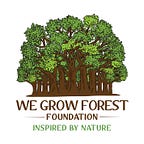THE UPSIDE DOWN TREE
Botanical Name : Adansonia grandidieri Baill.
Common Names : Grandidier’s baobab, Baobab Tree, Bottle Tree, Upside Down Tree.
Family : Malvaceae
Subfamily : Bombacoideae
Genus : Adansonia
Species : grandidieri
Habit : Deciduous Tree
Adansonia grandidieri also know as the Upside Down Tree is named after Alfred Grandidier (1836–1921), a French botanist and explorer. The English name “baobab” is believed to be derived from the Arabic “bu hibab,” which means “fruit with many seeds”. This peculiar tree is native and endemic to Madagascar’s island. The tree is threatened by habitat degradation, agricultural land invasion and poor regeneration due to limited numbers of mature specimens.
Adansonia grandidieri is a deciduous, medium-sized, unarmed tree that can grow up to 30 metres. However, stunted trees in the southern part of its area can reach only 5 metres. It is the most beautiful and well-known of Madagascar’s six baobab trees. The most well-known specimens can be found near Morondava on Baobab Avenue. It has a large, cylindrical trunk often known as ‘bole’ that can grow 3 to 5 metres in diameter and store water during droughts. Part of the reason the trunks become so big is that they can hold water. A single trunk has yielded as much as 1000 gallons of water!
The bole is topped by a sparse, few-branched, flat-topped, light crown. This one is the most valuable and widely exploited of all the baobab species in Madagascar.
The tree’s trunk becomes reddish-grey in colour and slender, bottle-shaped, with a broad cantilevered crown. It has foliage from October to May in its natural habitat. It blooms with white flowers that open in the evening between May and August and release a watermelon smell. The tallest Baobab tree ever recorded measured at 98 feet tall and had a trunk diameter of 36 feet!
Adansonia grandidieri is distinguished by its bluishgreen, highly stellate-pubescent leaves and a dark brown flower bud. Flowers are usually white and turn yellow when they mature. Furthermore, A. grandidieri is distinguished from other species of Adansonia by its readily shattered fruit. The main Pollinators of bottle trees are Fruit bats, Lemurs, birds etc.
Uses of Upside Down Tree
The bottle tree is most commonly harvested for domestic use. The fruit pulp is consumed raw and high in vitamin C, and the seeds are used to extract cooking oil.
The tree’s bark can be up to 15cm thick. After being scraped, the outer bark can be broken into tiny pieces and sold as a calcium-rich medication. It can also be stripped down, dried, and sold as rope or rope-making sheets.
The flat-topped crowns bear bluish-green palmate leaves, dark floral buds, or stunning flowers with white to yellow petals at different times of the year.
The leaves will start to fall in the fall. The tree will be entirely dormant by the end of December, and the barren branches will resemble roots, which is why it is known as the upside-down tree.
Leaves and fruits which are the size of melons are edible. Baobab fruits are huge, dry fruits with edible pulp and kidney-shaped seeds. In late November, the fruits are harvested, and juice is produced for local use. Seeds are harvested and combined with rice to make a meal.
Why is it important to conserve Grandidier’s baobab?
The IUCN Red List of Threatened Species lists Adansonia grandidieri as ‘Endangered.’ It is the hugely exploited baobab species. The main recorded hazards are overgrazing and fire, but little is known about the amounts of bark and fruit collection. The conversion of this species’ forest habitat to agricultural land poses the greatest threat. There is a conspicuous lack of young trees in these damaged ecosystems. Fires, seed predation, weed competition, and a changing physical environment may be damaging the Madagascar baobab’s ability to reproduce, which could have severe effects on its existence.
To know more about We Grow Forest Foundation please visit our website https://wegrowforest.org/ or contact us at on 9778411911 or email at us plant@wegrowforest.org
